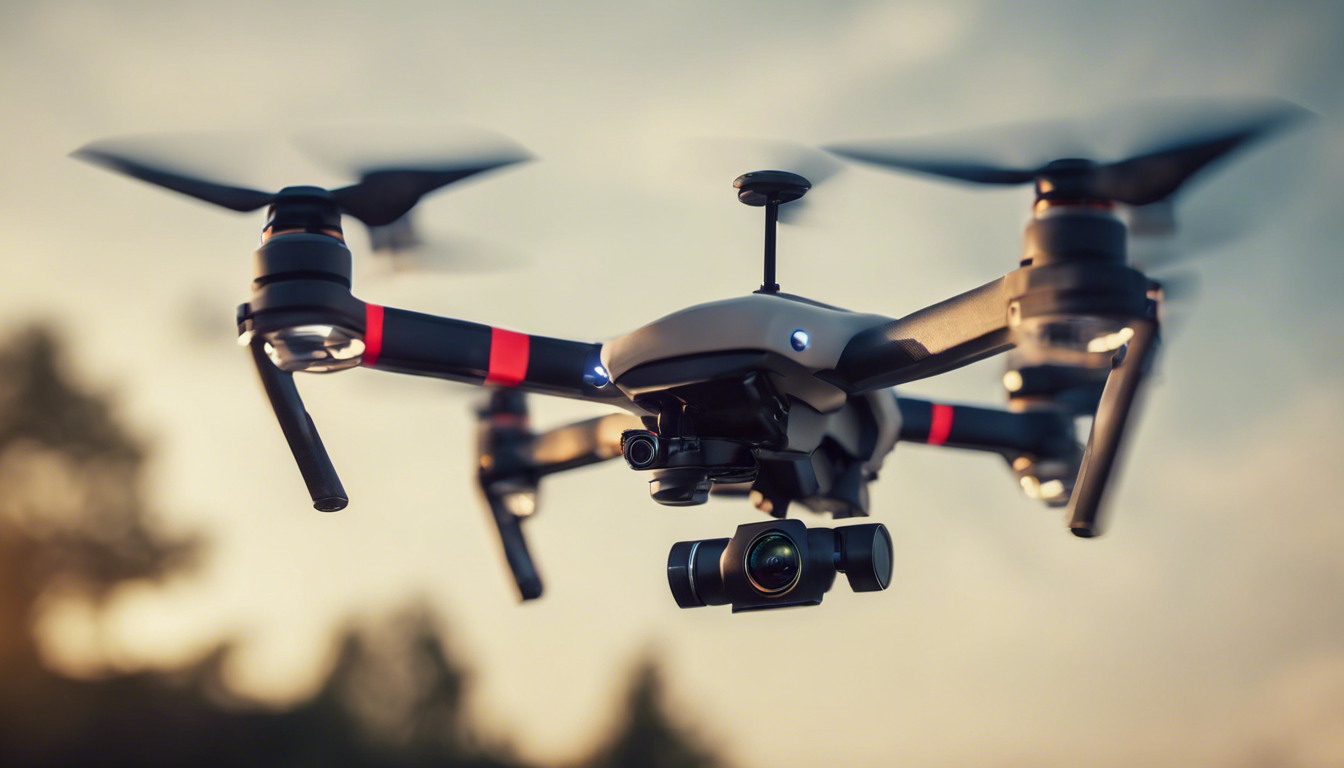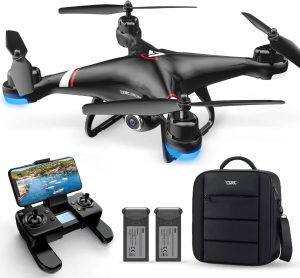
Overview of Open Source Drone Software Platforms
When you’re zipping your drone through the vast blue skies, it’s easy to forget the brain that powers its amazing stunts and smooth glides. This is where open source drone software platforms take the limelight – they are the unsung heroes behind many commercial and recreational UAVs (Unmanned Aerial Vehicles). Rather than conjuring up images of complex code, consider of this software as the ultimate puppet master, pulling the strings on the drone’s flight patterns, stabilization, and navigational skills.
Imagine a collective brain trust where experts and hobbyists alike contribute their wisdom for the greater good of drone technology – that’s what these platforms are all about. They are treasure troves of innovation developed by communities who believe in sharing knowledge freely. Names like PX4 and ArduPilot might not roll off your tongue like ‘DJI’ does, but they truly are juggernauts in the drone software space. These platforms have a DIY spirit at heart, giving you the tools to tweak and tune your flying companion to perfection.
Open source drone software isn’t just for those with a taste for coding. Nope, it is reaching out to a wider audience with easy to use interfaces that almost whisper, “Hey you, yes you – you can program a drone too!” Forget spending a fortune on proprietary tech; customizable missions and vehicle types are at your fingertips without emptying your wallet. Got a thing for aerial photography or precision agriculture? There’s an open source solution beckoning you to explore new heights literally.
And let’s not sidestep the cool factor here. Picture having your very own drone assistant that follows you on hikes, documenting every cliffside selfie without being told twice. This is the magic of companion computers enabled by open source software like MAVLink. It’s not just about unmanned flights; it is about crafting experiences that feel like something out of a sci-fi flick.
Within these digital toolboxes lie resources that turn even the greenest of beginners into drone whisperers, with forums and documentation as vast as the skies your drone will occupy. And yup, these platforms are as much about safe flights as they are about innovation. They’ve got built-in safety protocols that work like an invisible safety net, ensuring that your high-flying buddy doesn’t turn into a renegade rogue.
Loading up your drone with an open source software platform is akin to giving it a brain transplant – one that comes with the collective intelligence of developers from across the globe. It is reshaping how we ponder about drones, turning them into vessels of shared creativity and limitless possibilities. So grab your controller, power up that UAV and get ready for a journey this is about much more than just manual controls – it’s about being part of a revolution that is taking flight in the most literal sense.
Benefits and Challenges of Using Open Source Solutions for UAVs
Embarking on the open source journey with your UAV can be as exhilarating as it is nerve-wracking. The thrill of having access to a world of features that were once the domain of high-budget projects is palpable. The beauty lies in the sheer flexibility offered; imagine tweaking your drone for optimal performance in wind, rain, or dizzying heights without spending an extra dime! It is like a secret handshake among the UAV community that says, “Welcome, join the club where customization is king.”
But wait, before you soar into the clouds, let’s not gloss over the challenges. Grappling with the nuts and bolts of open source code can give anyone a few gray hairs, especially if you’re not the type who dreams in binary. Setting up your drone’s software can feel like assembling a spaceship with an instruction manual written in an alien tongue. Remember, freedom comes with responsibility – and in this case, the responsibility to understand and configure your software correctly.
There’s also the issue of support. You won’t have a dedicated customer service hotline to ring up when things go haywire mid-flight. Instead, you’ll have a community forum where solutions come as fast as members are typing – which could be anything from warp speed to “I’ll get back to you next Tuesday.” And those forums? They’re a double-edged sword. They can be a fountain of knowledge or a labyrinth of dead-ends, depending on the complexity of your issue and who’s online.
Yet, the open source pathway isn’t just about solving puzzles; it’s about contribution. The sense of achievement one feels from fixing a bug or enhancing a feature is akin to helping build a digital monument – one that flies. You’re not just riding on the shoulders of giants; you’re potentially becoming one when your contributions improve the platform.
For hobbyists who fancy themselves future drone savants, an open source platform is the ultimate test lab. This isn’t about playing it safe with ready-to-fly models; it’s about embracing the thrill of turning your sky-high dreams into reality, piece by piece, line by line of code.
Finally, it’s essential to mention the “update conundrum.” With open source software, updates are frequent and come without shiny packaging or a promise that ‘this will make everything better.’ Each update is a leap of faith – will it launch your UAV to stratospheric success or will it be a hard lesson in troubleshooting?
Sailing the skies with an open source-empowered drone is a tale of two cities—innovation and challenge living side by side. It’s a journey marked by breathtaking victories and poignant frustrations. For those with a spirit of adventure and a penchant for problem-solving, open source might just be your ticket to UAV nirvana.
Comparative Analysis of Popular Open Source Drone Projects
Now that we’ve circled around the concept and challenges of open source drone software, let’s pit some of the most buzzworthy projects against each other in our friendly neighborhood comparison arena. You may have heard whispers of these big hitters from the tinkerers and tech wizards out in the field: PX4, ArduPilot, and Paparazzi UAV. These are not your average Joe software suites; they’re more like the heavyweights of the open source drone world.
PX4 is a bit like a Swiss Army knife for the drone enthusiast—it’s got features up its sleeve that will make your UAV do flips in admiration (metaphorically speaking, but hey, maybe literally too). It is known for its smooth flight capabilities and impressive reliability. This platform was born ready to play nice with various airframes, from helicopters and fixed-wings to our everyday multi-rotors. It’s quite the polyglot too—different languages and processor types don’t phase it.
Now, let’s not forget its cousin in innovation, ArduPilot. If you’re looking for a robust community vibe, this one’s your match. It can run on a variety of hardware platforms and is considered exceptionally versatile for research and education purposes. Imagine pulling off sophisticated missions akin to something NASA would nod at approvingly—the autonomy it offers is just that good. Plus, it is been around a block or two longer than PX4, so it’s accumulated quite a bit of street cred.
For those with an appetite for academia, you might get a taste for Paparazzi UAV. Born in the hallowed halls of university labs, this platform is for those who like their drones served with a side of cutting-edge research. It leans more towards the experimental crowd eager to push the boundaries of what’s possible in UAV technology. It might not be as newbie-friendly as the others but ponder of it like the final boss in a game—challenging yet ultimately rewarding.
It’s quite a sight to behold when you line these projects up side by side. You’ll notice they all share a commitment to pushing the envelope for what drones can achieve. Yet each has its distinct flavor, like different types of hot sauce that range from ‘oh, interesting’ to ‘call the fire department.’
But let’s sprinkle some reality seasoning on this comparison dish: no platform is ideal. Each one has its quirks, and it might take some time for you to discover which one syncs up best with your personal UAV dreams and aspirations—or nightmares, depending on how your first flight goes. Still, it’s like choosing between rockstars—whichever one you go with, you’re pretty much guaranteed an autographed experience full of excitement and learning curves.
It is important to remember that while these projects might seem as different as apples, oranges, and, uh, bananas—they’re all fruit from the same tree of open source innovation. They invite you to tweak, play and become an active part of the ever-evolving story of drone technology. Curiosity and patience are your tickets to this show—and trust me, it’s one heck of a ride!
